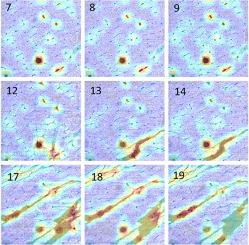Journal of the Mechanical Behavior of Biomedical Materials ( IF 3.3 ) Pub Date : 2021-08-14 , DOI: 10.1016/j.jmbbm.2021.104761 Sabrina Chin-Yun Shen 1 , Marta Peña Fernández 2 , Gianluca Tozzi 3 , Markus J Buehler 4

|
Machine learning methods have the potential to transform imaging techniques and analysis for healthcare applications with automation, making diagnostics and treatment more accurate and efficient, as well as to provide mechanistic insights into tissue deformation and fracture in physiological and pathological conditions. Here we report an exploratory investigation for the classification and prediction of mechanical states of cortical and trabecular bone tissue using convolutional neural networks (CNNs), residual neural networks (ResNet), and transfer learning applied to a novel dataset derived from high-resolution synchrotron-radiation micro-computed tomography (SR-microCT) images acquired in uniaxial continuous compression in situ. We present the systematic optimization of CNN architectures for classification of this dataset, visualization of class-defining features detected by the CNNs using gradient class activation maps (Grad-CAMs), comparison of CNN performance with ResNet and transfer learning models, and perhaps most critically, the challenges that arose from applying machine learning methods to an experimentally-derived dataset for the first time. With optimized CNN architectures, we obtained trained models that classified novel images between failed and pristine classes with over 98% accuracy for cortical bone and over 90% accuracy for trabecular bone. Harnessing a pre-trained ResNet with transfer learning, we further achieved over 98% accuracy on the cortical dataset, and 99% on the trabecular dataset. This demonstrates that powerful classifiers for high-resolution SR-microCT images can be developed even with few unique training samples and invites further development through the inclusion of more data and training methods to move towards novel, fundamental, and machine learning-driven insights into microstructural states and properties of bone.
中文翻译:

评估骨组织损伤力学的深度学习方法
机器学习方法有可能通过自动化改变医疗保健应用的成像技术和分析,使诊断和治疗更加准确和高效,并提供对生理和病理条件下组织变形和断裂的机械洞察。在这里,我们报告了使用卷积神经网络 (CNN)、残余神经网络 (ResNet) 和转移学习对皮质和骨小梁骨组织的机械状态进行分类和预测的探索性研究,并将转移学习应用于源自高分辨率同步加速器的新数据集。在原位单轴连续压缩中获得的放射显微计算机断层扫描 (SR-microCT) 图像. 我们展示了用于该数据集分类的 CNN 架构的系统优化、CNN 使用梯度类激活图 (Grad-CAM) 检测到的类定义特征的可视化、CNN 性能与 ResNet 和转移学习模型的比较,也许是最关键的,首次将机器学习方法应用于实验派生的数据集所带来的挑战。借助优化的 CNN 架构,我们获得了训练有素的模型,该模型将新图像分为失败类和原始类,皮质骨准确率超过 98%,小梁骨准确率超过 90%。利用带有转移学习的预训练 ResNet,我们进一步在皮层数据集上实现了超过 98% 的准确率,在小梁数据集上达到了 99%。











































 京公网安备 11010802027423号
京公网安备 11010802027423号